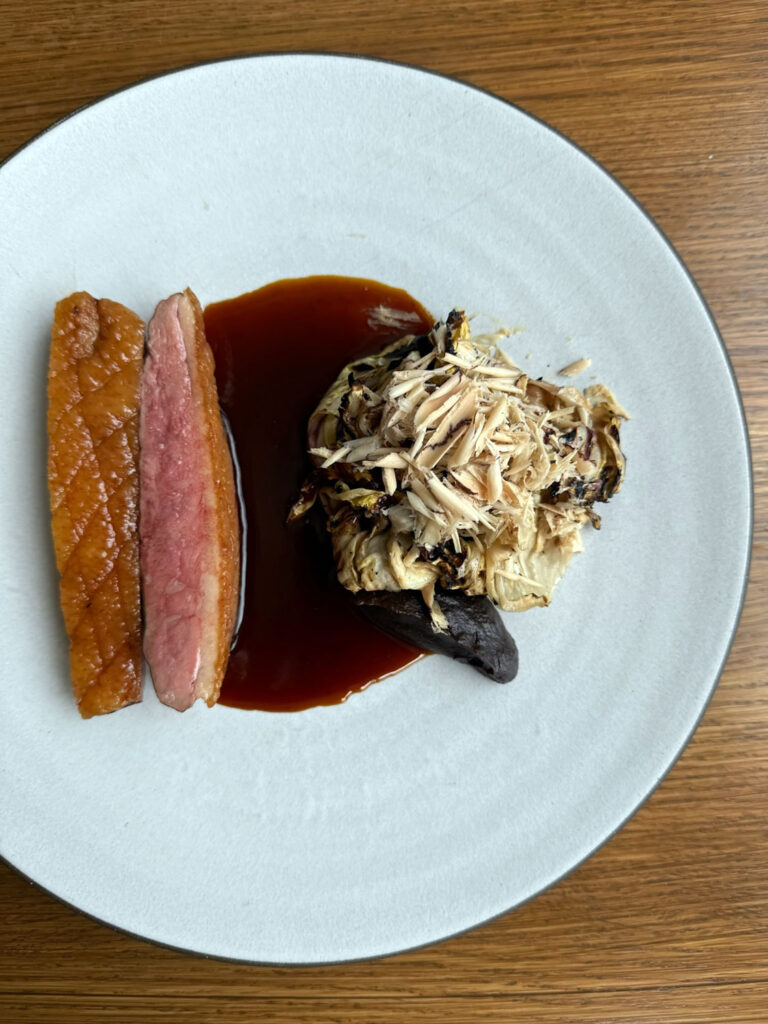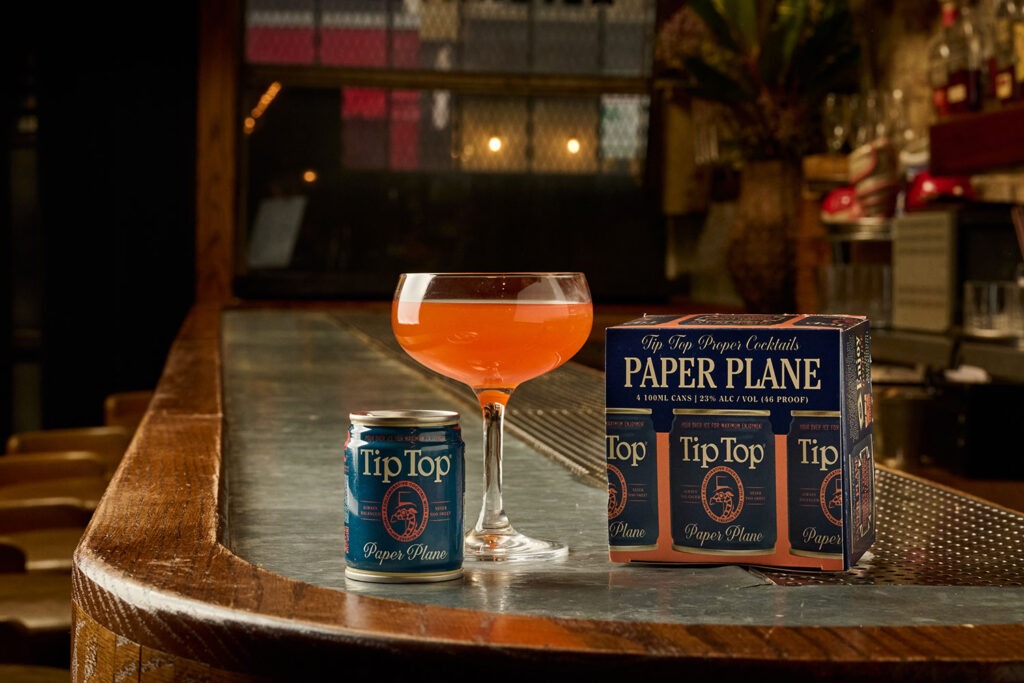Tasting Menus Are Getting Shorter and More Affordable
Illustration: Greg Clarke
One of the things The Bear really gets right about Chicago is the way the whole world-class tasting menu thing and the whole pizza-beef-hot dog thing basically keep the conversation here going by shouting at each other across the room. Those seem to be the two subsets of our vast and varied dining culture that elicit the most opinions, the most passion, the most words.
But it looks like things on the high end are starting to change — maybe even come back to earth’s atmosphere. For years it’s been like this: If you want to try the best food from the city’s most ambitious chefs then you have to preorder a meal that usually costs about $200-$300 per person before tax, beverage, or 20% auto gratuity. The meal will consist of 10 to 15 courses with no choices, and it will last a minimum of one Avengers movie. This is the model developed by Nick Kokonas at Tock here in Chicago, and it has come to dominate fine dining. I’ve long argued that those of us who would like a more abbreviated meal should have a place at the table.
The Shift Towards Shorter Menus
Now it’s happening. Today’s new crop of tasting menus are tighter, more affordable, and feel more like a really great meal than a gastronomic blowout. John’s Food & Wine in Lincoln Park recently debuted a tasting menu to complement its popular à la carte offerings. At first it was more of a reach, priced at $185 and featuring eight or more courses. Maybe their guests didn’t want all that and they read the room. Now it’s a tight five at $125, and it’s terrific. Cold seafood, hot seafood, pasta, duck, ice cream dessert. There’s balance, tension, a story arc. It’s expensive, but not White Lotus shit.
 The duck course Photograph courtesy of John’s Food & Wine
The duck course Photograph courtesy of John’s Food & Wine
Fire by the Alinea Group clocks in at $115 and seven courses. Moody Tongue has replaced its $285 extravaganza with a $155 eight-course menu. None of these are a bargain in anyone’s calculation, but what they all understand is that a curated experience doesn’t have to be the ne plus ultra of all fine dining in order to aim for the highest level.
Barring Any Differences
I had a funny experience at Albion Manor, the Bucktown bar that’s on my way home from the gym and always has convenient free parking nearby. I got my usual pint of English ale but decided I wanted a little sippin’ whiskey alongside. They had a nice selection, all of which were detailed in the QR code menu — the only one offered. I decided on a pricey $17 pour of Stauning Bastard, a Danish rye that gets its smoky character from aging in mezcal barrels. The barkeep asked if I wanted a shot, to which I replied I preferred it in a small glass. I wanted to smell it and possibly add a bit of water to open it up.
When the bill came, it was $19, so I pointed the discrepancy out. Welp. Apparently if you get a shot, it’s an ounce pour but if you ask for it in a glass it’s an ounce and a half. Should I have known this? It wasn’t indicated anywhere on the menu. The barkeep had such a definitive no-budging tone in their voice that I knew I’d have to get whiny and complain if I wanted to pay the advertised price. I didn’t want any hassle so I blurted out, “That’s okay, I’ll just take it out of the tip.” Then, feeling the asshole-y way that landed, I added, “But I’m a good tipper.” Is that ounce-and-a-half pour a well-known thing? Should I have known? Usually at other bars they ask if I want one ounce or two. Oh well, it was nice whiskey.
Up, Up and Away
 Photograph by Jose Pereiro
Photograph by Jose Pereiro
The first craft cocktail that really spoke to me was the Paper Plane, which I tried about 15 years ago at the Clover Club in Brooklyn. Sam Ross had created this drink here in Chicago at the Violet Hour just a couple of years before, but it spread quickly because so many people, like me, thrilled to its piercing balance. Equal parts of bourbon, lemon juice, Aperol, and Amaro Nonino set sweetness, tartness, bitterness, and booziness into lockstep, and then that Nonino takes it all to an unexpectedly elegant finish. When I went back home to Atlanta a few weeks ago, I was happy to see the city’s favorite cocktail canners — Tip Top Proper Cocktails — had worked with Ross to devise a version. It’s pretty close, lacking only the brightness of fresh lemon and the finish. Currently you can only mail order the Paper Plane (as well as a very nice version of another Ross classic, the Naked & Famous) in Illinois, but they are coming soon to liquor store shelves, Tip Top’s chief brand officer Neal Cohen told me.
Conclusion
In conclusion, the culinary scene in Chicago is evolving, with a shift towards shorter, more affordable tasting menus. This change is a welcome one, as it allows for a more approachable and enjoyable dining experience for a wider range of people. Additionally, the rise of craft cocktails and creative drink options is also contributing to the city’s vibrant food and drink culture.
FAQs
Q: What is the average cost of a tasting menu in Chicago?
A: The average cost of a tasting menu in Chicago can vary, but it is typically around $200-$300 per person.
Q: What is the Paper Plane cocktail?
A: The Paper Plane is a craft cocktail made with bourbon, lemon juice, Aperol, and Amaro Nonino.
Q: Where can I find the Paper Plane cocktail in Chicago?
A: The Paper Plane cocktail is available at various bars and restaurants in Chicago, including the Violet Hour.
Q: Can I order the Paper Plane cocktail online?
A: Yes, the Paper Plane cocktail is available for mail order in Illinois through Tip Top Proper Cocktails.
Q: What is the difference between a shot and a pour of whiskey?
A: A shot is typically an ounce pour, while a pour can be an ounce and a half.


